| Home > Policy > White Paper, Notice, Announcement > White Paper > JAPANESE GOVERNMENT POLICIESIN EDUCATION, SCIENCE, SPORTSAND CULTURE1998 > MENTAL AND PHYSICAL HEALTH AND SPORTS CHAPTER3 SECTION3 1 | ||
Running,walking and other individual exercise isimportant for health,but considering the diversesignificance of sports,exercise in a sports association is more effective in achieving the broaderaims of sports.It is difficult to be active in teamsports in particular,without joining a sports activity association or sports club( see column).
Current membership in sports activity asso-ciations is shown in Table3-3,according to the results of the"Survey on Health and Sports."Elementary school students belong to a variety of sports clubs,including extracurricular sports clubs and community sports clubs,but lower and upper secondary school students belong almost exclusively to extracurricular sports clubs.Among adults(people over19years old),the number that join private sports clubs increases,although more than70%of the people belong to no association.To summarize,children primarily play sports at school,while some adults join private sports clubs but most adults do not take part in sports to the point where they want to join an association.
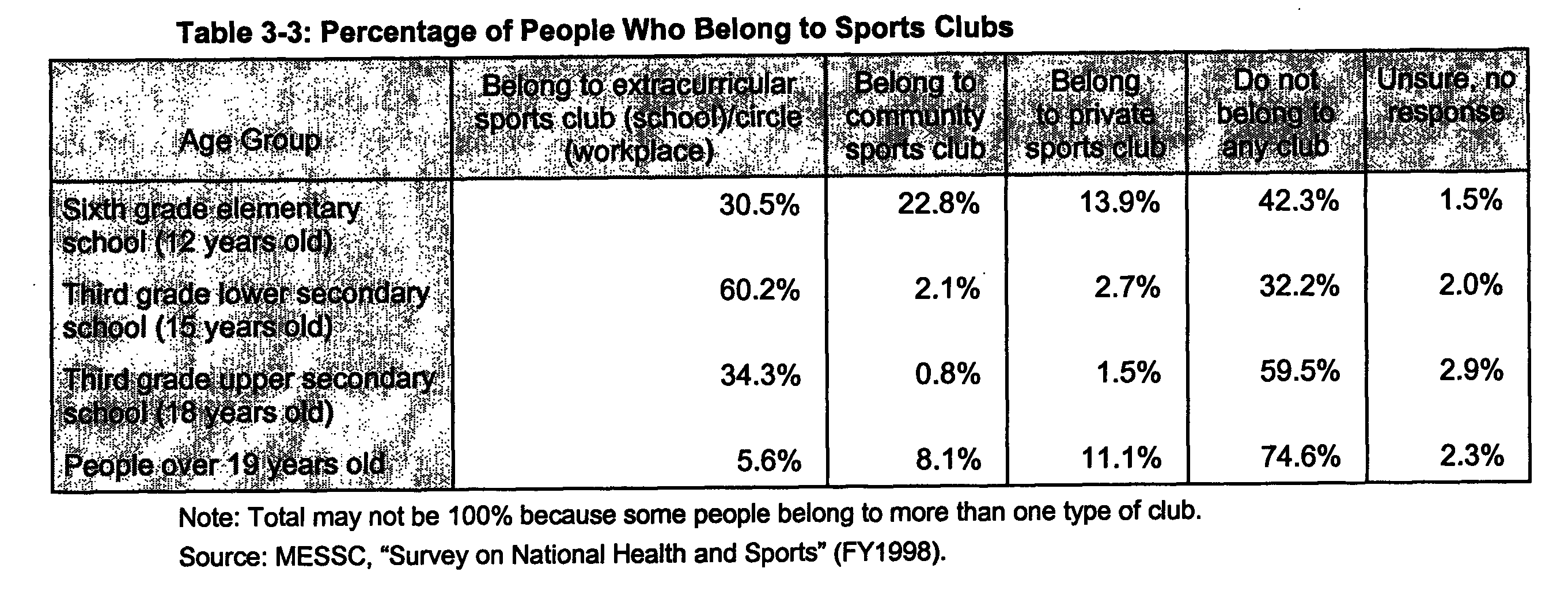
Sports in Japan have traditionally developed mainly at schools which have fulfilled a variety of roles,disseminating and promoting sports,while also developing top athletes.However,since schools play a central role in sports activities,the opportunities to continue to enjoy sports decrease sharply once people graduate.Sports clubs exist in some companies,but these are often only for top athletes,and even if tbere are sports circles,they may be inadequate in meeting all the employees'sports needs.One of the reasons for the low level of sports activity among the Japanese is the lack of opportunity for such activity afier graduation from school.In order to improve this situation,it is necessary to stimulate sports activity at the community level.If sports activity were to become possible at that level,it would be easier to continue enjoying sports even affer graduating and entering the workforce.For that reason,community sports clubs and other sports activity associations are becoming necessary.
[Column]Types of sports clubs Sports clubs are generally associations voluntarily started up by sports enthusiasts and are social groups where members take part in sports activities to deepen their companionship with one another under set rules and other regulations.Sports clubs in Japan can be categorized into four types: |
Japan has many community sports clubs,although the development of such clubs is insufficient by comparison with those in Europeancounhies.
A well-known example of such communitysports clubs are youth sports associations.At present,youth sports associations number some34,000nationwide and over900,000elementaryschool students(approximately10%)belong tothem.Virtually all members are elementaryschool students,with the majority in the fourth,fifth and sixth grades.About20%of these associations provide multiple sports,but most havejust one sports type.Among lower and uppersecondary school students,the number who belong to these associations decreases sharply asmany join their schools'extracurricular sportsclubs.In this way,youth sports associationsmainly target elementary scbool students andusually conduct just one sports type( see Table3-4 ).
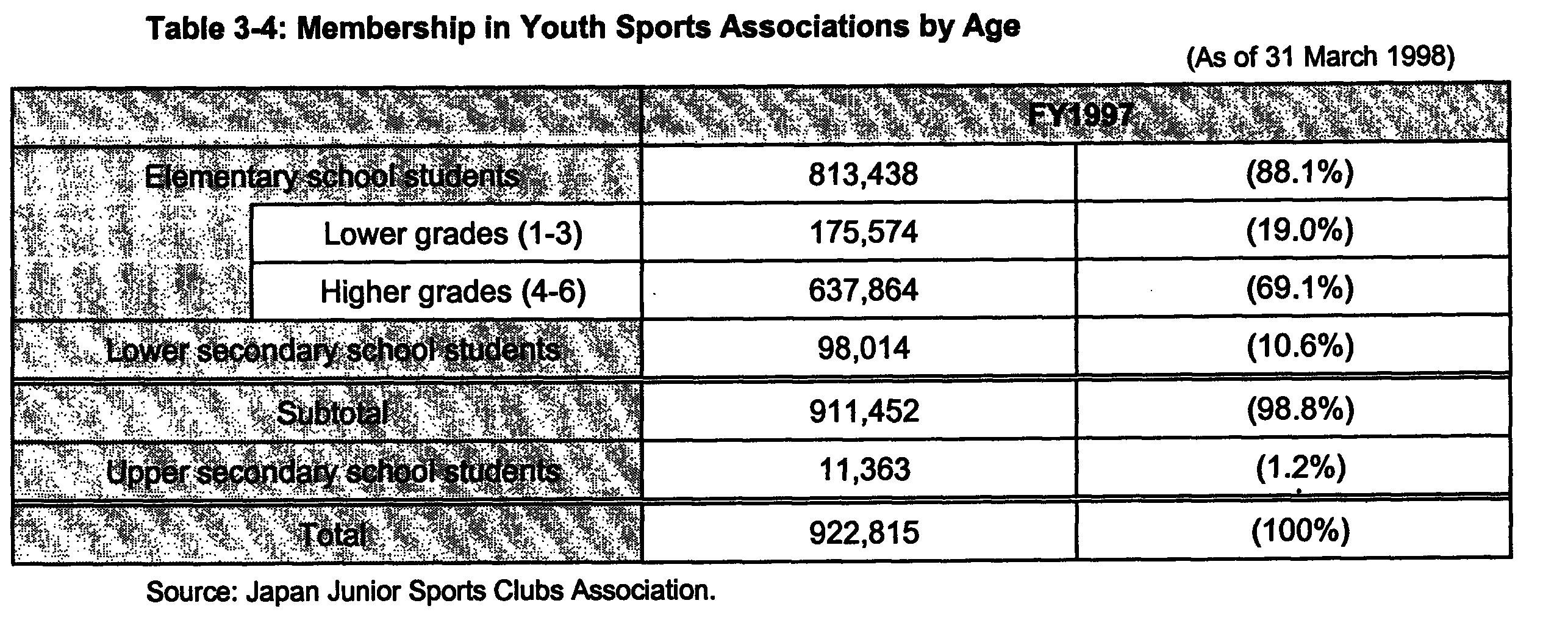
Other community sports clubs have the samecharacteristics as youth sports associations.Community sports clubs today are generally forlimited age groups and single activities,such asvolleyball for housewives(so-called"mama volleyball")in adult community sports clubs.According to a survey conducted by the JapanSports Club Association in1996,92%of community sports clubs were single-activity sportsclubs and nearly60%were limited to a specificage group.The survey also reveals that most ofthese were small,averaging31members.InGermany,by way of contrast,the average isabout300members( see Figure3-19 , Table3-5 ).
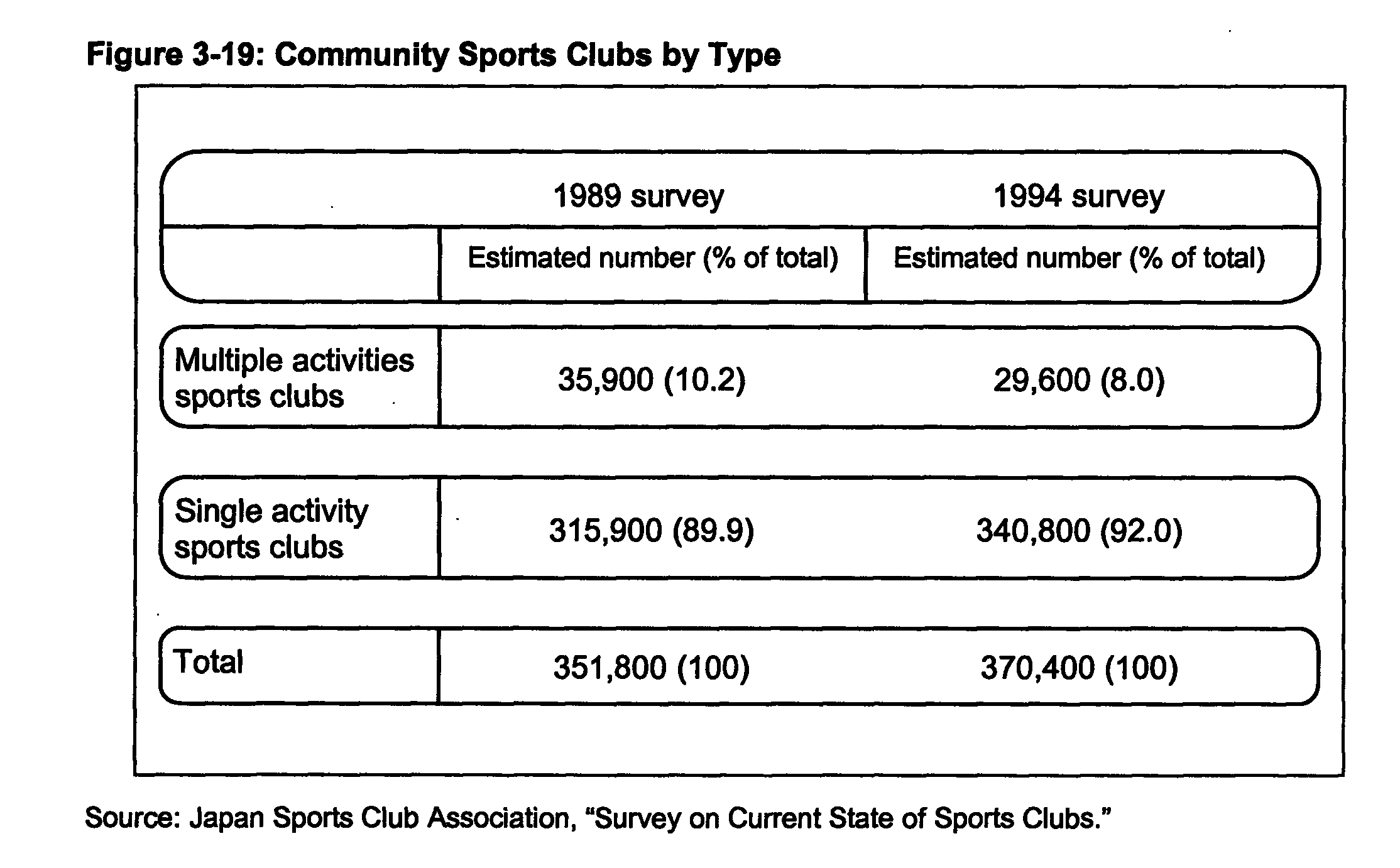
In this way,community sports clubs in Japan are generally small in size,focus on just one sports type and are organized according to specific age groups.Community sports clubs are organized on the initiative of local residents and,in this sense,should play a central role in promoting lifelong participation in sports.However these clubs need to be im-proved in the following respects if Japan is to achieve a genuine lifelong sports society in which sports can be enjoyed by anyone,anywhere and anytime.
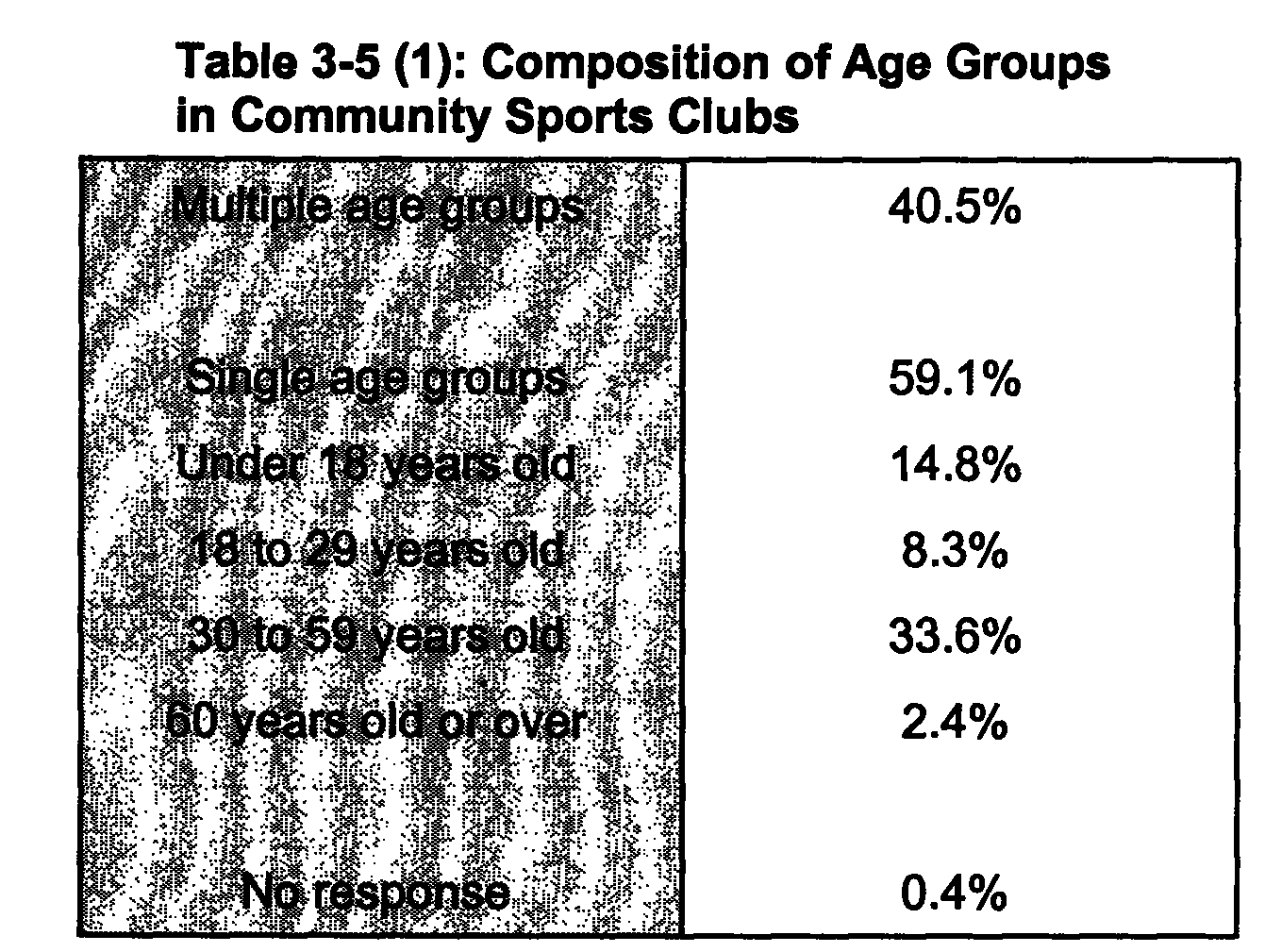
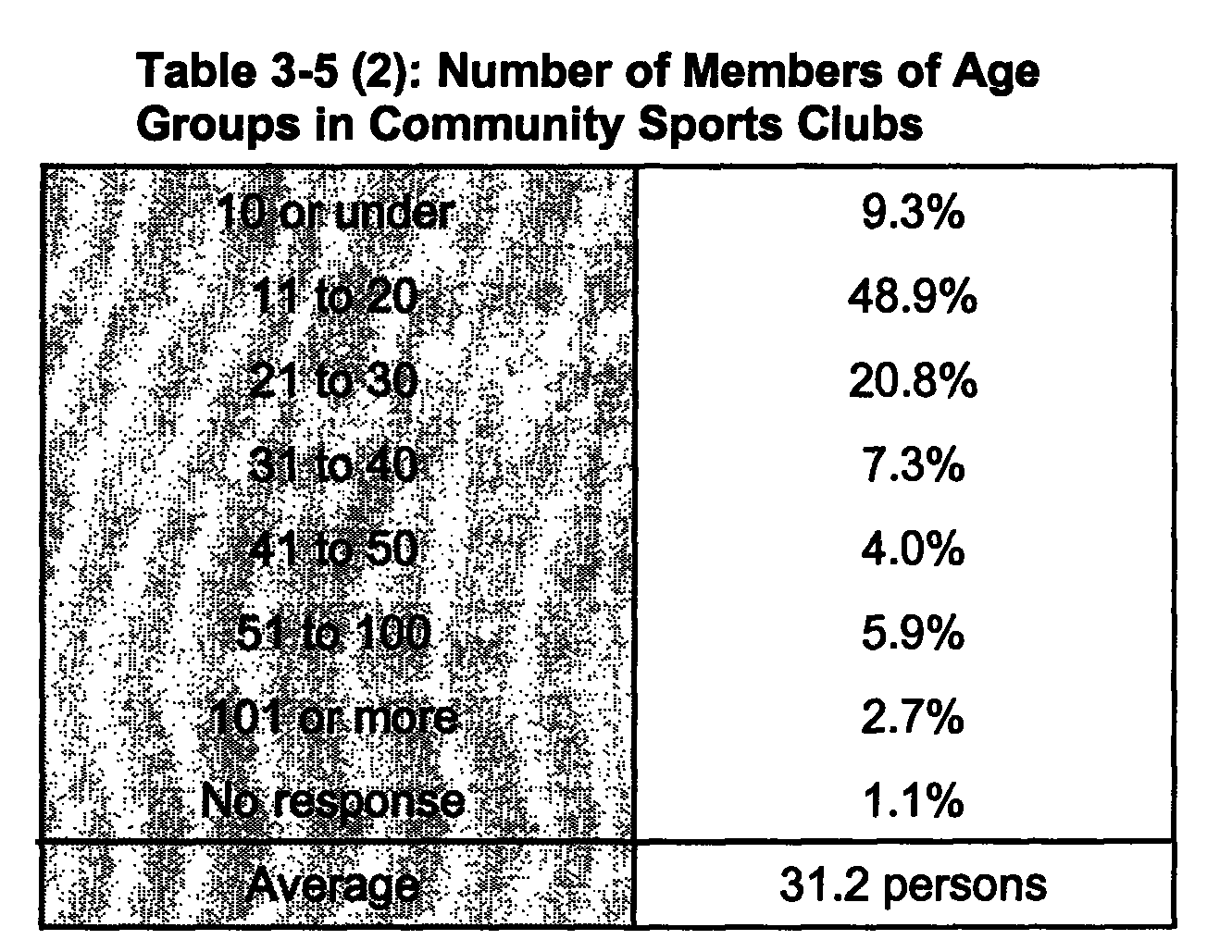
Source:Japan Sports Club Association,"Survey on Current State of Sports Clubs"(1995).First is the issue of sports club sustainability.Whether due to small size or some other factor,nearly a quarter of Japan's single-activity sports clubs dissolve within five to ten years.When sports clubs dissolve,quickly,it is a major problem for those who want to continue sports and makes it difficult for the clubs to build relations with,and integrate into,regional communities.Second is that facilities are not used efficiently.Sports clubs do not always coordinate adequately with each other and some60%of the clubs use public sports facilities exclusively for themselves during a block of time.If small clubs occupy facilities for themselves,the facilities are used inefficiently.If community sports clubs throughout the nation insisted on doing this,an unlimited number of sports facilities would become necessary.Third,there is a need for people to look for the sports clubs that suit them by specific age group since that is how the clubs are organized.With so many small sports clubs and not enough information provided about them,it is not easy for a person to find the sports club that suits their needs.This complication may discourage membership in sports clubs or even cause people to stop the sports activities they have started.In light of these current issues,there is a need for community sports clubs as bases for lifelong sports,that are larger and less likely to dissolve,available to people of any age group or skill level and that cover multiple sports.MESSC advocates the development and establishment of comprehensive community sports clubs.
| Back to Top | MEXT HOME |